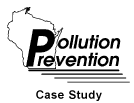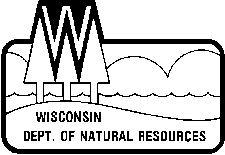
|
Dome Petroleum
Installation of Rupture Disks to Prevent
Volatile Organic Compounds (VOC) Air Emissions |
| Standard Industrial Classification
(SIC) |
Hydrocarbon Gas Processing - 2911 |
| Type of Waste |
Very light end hydrocarbon liquids and
gases |
| Strategy |
Process Modification |
| Company Background |
Dome Petroleum Company was established in
Superior in 1970. Dome is a subsidiary of Amoco Canada. The company employs four full-time
employees and three contract employees. The facility stores natural gas liquids in some of
the largest storage spheres in the world. In 1991, the facility was expanded with new
storage tanks and a depropanizer facility. This facility separates propane from the butane
in the natural gas liquids. The propane that is separated is sold locally. |
| Original Process |
The original process had the process fluid
pressure exerted directly on the face, body and gaskets of the pressure relief valve.
Prior to installing the rupture disks the only way to minimize leaks was to do expensive
monitoring on a quarterly basis. This monitoring only minimized leaks, it did not
eliminate them. |
| Motivation |
The motivation for installing the rupture
disk was threefold:
- Environmental: Relief valves could have leaks that easily go undetected
till the quarterly audit of the valves.
- Safety: Combustion monitors located on the property may not detect a leak
and puts the community and employees at risk.
- Economics: Both lost product and the cost of the quarterly monitoring are
saved by installing the rupture disks.
|
| Pollution Prevention Process |
Dome Petroleum installed rupture disks
between the process fluid and the pressure safety relief valves. The rupture disks are a
non-mechanical over pressure relief device that totally isolates the process fluid from
the safety relief valve. This isolation of the process fluids from the safety relief
valves totally eliminates any gas leaks through the relief valves while at the same time
maintains the safety of the processes emergency venting system. The space between the
rupture disks and the pressure relief valve is monitored in the unlikely case of a leaking
rupture disk. Monitoring in this space is accomplished with either a pressure alarm or
pressure gauge. The pressure alarms that are now installed between the rupture disk and
the pressure relief valves immediately inform the operators if there is a leak of process
fluid. (See diagram below. For a larger view, please click on diagram) 
|
| Scale of Operation |
Dome Petroleum has a storage capacity of
10.5 million gallons of natural gas liquids. The company processes 420,000 gallons of
natural gas liquid daily to make propane. |
| Stage of Development |
This pollution prevention technique is in
full use. Site inspection by air management staff verified this equipment installation in
October 1995. |
| Level of Commercialization |
These techniques have been available for
many years but have been continually improved. The rupture disks are available for most
hydrocarbon processes for a variety of size lines, working pressures and temperatures. |
| Material/Energy Balance |
Dome has virtually eliminated VOC air
emissions from these valves. Using emission factors from the EPA, the calculation for the
amount of product lost prior to installation of the rupture disks is: 3 pipeline valves X 210.24 lbs of VOC/year = 630.27 lbs/yr
24 vessel relief valves X 3153.6 lbs of VOC/year = 75,686.4
lbs/yr
Total = 76,317.12 lbs/yr VOCs (38TPY)
or $5,143.00/yr |
| Economics |
Capital Costs
| Rupture disks |
$11,551 |
| Other mechanical material |
5,785 |
| Conduit and wiring |
8,560 |
| Tubing and isolation valves |
4,600 |
| Pressure switches |
4,200 |
| Crane rental |
7,986 |
| Labor |
10,795 |
TOTAL |
$53,477 |
Operation/Maintenance Costs
Previous to the installation of the rupture disks, operational costs were four site visits
per year from the valve monitoring company. These monitoring tests cost $16,000 per year
($4,000 per visit). Under the terms of Dome Petroleum's permit with the DNR, monitoring
has been reduced to one visit per year. Dome estimates that other operation and
maintenance costs for the valves to be less than $500 per year. Operation and maintenance
costs are $4,500 per year.
Payback Period
Invested |
Saved |
Payback |
$53,477 |
$16,643/yr. |
3 years |
|
| Benefits |
Lowered costs, higher level of
environmental protection and improved protection from catastrophic failure of pressure
safety relief valves. |
| Obstacles |
None encountered. The DNR Air Management
staff worked with Dome to achieve an additional economic benefit from this technology.
Permit required monitoring was reduced while actual environmental protection was realized
by lowered air emissions. |
| Technology Transfer |
Any other hydrocarbon processor/storage
facility can take advantage of these rupture disks to lower emissions and monitor
expenses. |
| Other Pollution Prevention
Activities |
The older part of the plant (natural gas
liquid storage) was not required to do valve monitoring. Dome included this part of the
facility in the pollution prevention program along with the new part (the depropanizer
processes). |
| Company Address |
Dome Petroleum Corp.
21st and Stinson Ave.
P.O. Box 2096
Superior, Wisconsin 54880 |
| Contact Person |
Richard Boyer, Area Foreman, (715) 398-3824 |
| Pollution Prevention Resources |
Free, On-site Technical Assistance
University of Wisconsin Extension
Solid and Hazardous Waste Education Center
Milwaukee area: 414/475-2845
Remainder of state: 608/262-0385Waste Reduction and
Cooperative Environmental Assistance Order Form
Wisconsin Department of Natural Resources
Bureau of Environmental Cooperative Assistance
608/267-9700 or e-mail: cea@dnr.state.wi.us |
 |
Bureau of Cooperative Environmental Assistance
Wisconsin Department of Natural Resources
P.O. Box 7921
Madison, WI 53707
608/267-9700
TS-066 96 |
|


